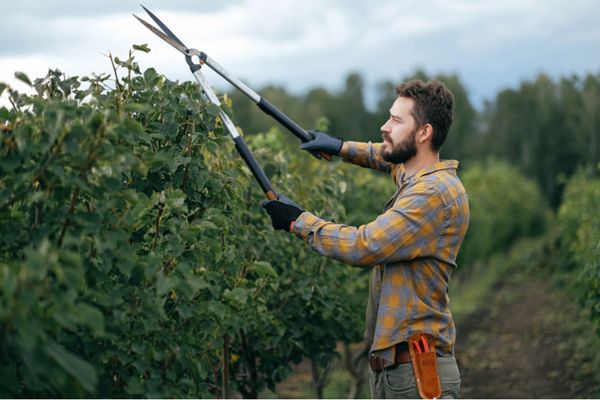
Photo courtesy of Anna Shvets / Pexels
The coldest part of the winter is the perfect time to dream. No need to go anywhere when these roads are icy and the wind blows in from the west and the north. Just use your fingers to surf the web or open catalogs. It is the time to collect ideas and select possibilities.
We can all dream big. But why? Let us recognize what we have and select possibilities that are achievable and realistic. Are you planning hardscape changes by putting in a walkway or a deck, building a wall or securing a fence? Are there portions that can be done over several seasons, or is it necessary to do it all at once?
Do your dreams involve plants? Nestle yourself amid catalogs from seed companies and books with suggestive photos to start those creative juices. Dog-ear pages, make a list, or sketch the idea as you come across it. A restful afternoon will yield a good amount of options.
Now get practical. Two main areas of concern are cost and space. How much is in your budget? That sure will determine a lot. Where do you start? Well, is there an eyesore that needs attention or an area of the property where plantings will improve market value? You will want to remember the UT Extension mantra of “Right plant in the right place.” Size, soil conditions, sun requirements and the need for supplemental water are just several of the plant properties that need to be assessed.
After the practical side has whittled down your possibilities, then you can have fun in selecting the colors, forms and plant combinations. Will any last more than a year? If so, how will their growth affect the selected area? Does it work? Or do you need to make a different plant choice?
I have a few items on my list this year. I want to get vegetables growing in a new area. I have a 10-by-30-foot section that is in desperate need of help. I am hoping to amend the soil to support plant life and convert it to a productive area. I am considering small fruit trees and bushes.
I want to read John Forti’s Heirloom Gardener. I should replace some of the annual garden work with perennial choices for returning productivity with less effort.
I want to take a ride to the Atlanta area and visit Gibb’s Garden. I visit gardens wherever I travel, but traveling to visit this garden is worth the effort.
Finally, I need to inventory and then expand my herb garden.
An action item this month is to trim and prune bushes, woody ornamentals and trees. Be aware of the bloom cycle of the plant that you are trimming. If you remove branches of spring flowering plants, you will greatly reduce or eliminate any blooms this year. So you may want to constrain your trimming zeal to the plants that bloom after July 1. When the spring flowering plants have finished their show this spring, then prune them.
Pruning is good for health and appearance. It should be part of the annual inspection of your trees and bushes. The UT Extension service has publication #1619, titled “Best Management Practices for
Pruning Landscape Trees, Shrubs and Ground Covers.” It is a great resource on the topic and from which I quote:
Reasons to prune:
1. Prune to maintain plant health. Remove dead, damaged or diseased plant tissue to maintain plant health and vigor.
2. Prune to remove misshapen, crowded and rubbing branches and branches with narrow crotch angles. These pruning cuts eliminate problems before plant damage occurs.
3. Prune to increase flowering and fruiting. More flower buds will be formed for the following season if old flowers are removed when they lose their attractiveness, a practice called dead-heading.
4. Prune to train plants to a particular size or shape, including hedge and espalier forms.
5. Prune to rejuvenate old, overgrown shrubs and restore plant density, shape and vigor. Large-habit plants in the wrong place, like hollies, privet and photinia planted in front of windows, should be replaced.
Pruning is not tree topping. This local practice of reducing a tree to a trunk with only stubbed limbs remaining is a horrifying, misconstrued effort that reeks of ignorance. Just cut the tree at the base and end its life cleanly.
If you do want to keep the tree, selectively and intelligently remove dead limbs and limbs that cross over each other, keeping the one with the best growth pattern. The whole limb goes, right down to the trunk or the base of the branch. If you don’t know what the plant should ideally look like, use your resources!













